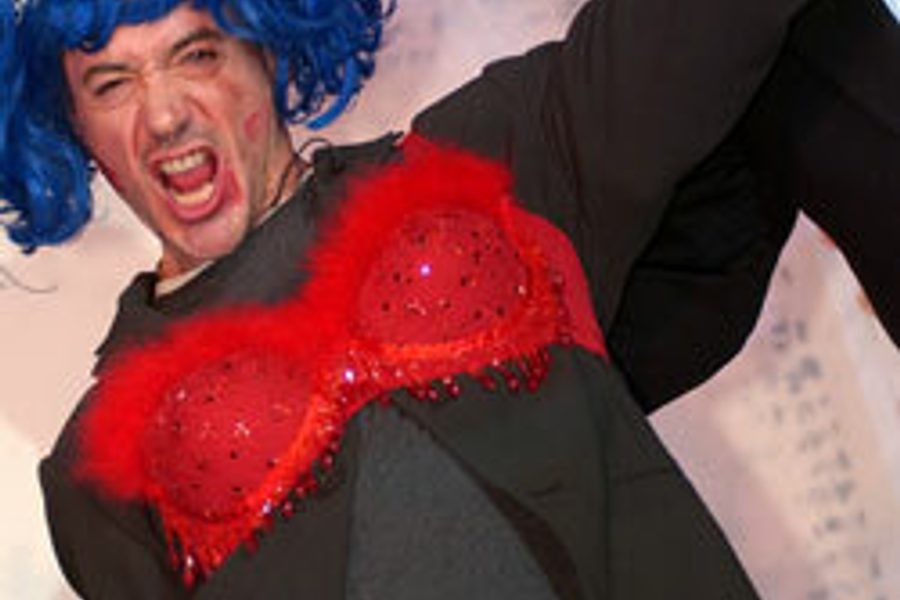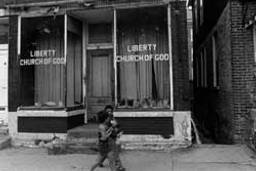
The musical Hairspray, playing on Broadway for the past two years and now on tour, is about race relations and the growth of tolerance in 1962 Baltimore. It won a Tony Award for Best Musical, and its leading lady took home the award for Best Lead Actress in a Musical. More notably, Harvey Fierstein won Best Lead Actor for portraying the leading lady’s mother.
A man winning plaudits for portraying a woman raises a few questions: Why do we celebrate performance in drag? Isn’t drag just yet another variation on a dominant group appropriating the identity of a disempowered group for its own ends?
As Erika Munk pointed out in 1985 in The Village Voice, “Most men in drag are no more subversive than whites in blackface were. The more women fight for autonomy, the less helpful become restatements of stereotype which have lost their critical edge and turned into means of putting women down and aside.” Maybe blackface is considered an insult and drag acceptable because of some inherent difference between them — or maybe just because no one has yet brought to bear on drag the kind of analysis that sent blackface to its unmourned death.
I should be clear that by “drag,” I mean men dressing as women in public performance. The problem here is not displays of pride in being gay or the sexual meanings people assign to clothing — but the theft of female identity, the transfer from women to men of the power to represent publicly what a woman is supposed to be. In discussing drag, we talk about challenging the audience’s conception of gender, or recovering the male performer’s sense of the feminine. But what about those of us being impersonated? What will it take to develop that sense of shock when a man portrays Lady Bracknell?
From Mrs. Doubtfire to La Cage aux Folles, from cross-dresser balls in Harlem to Hasty Pudding theatricals at Harvard University, drag represents institutionalized male hostility toward women on a spectrum that runs from prescription of desired behavior to ridicule. Such drag is not used exclusively for comedic effect. Scholar Judith Butler took the lead in distinguishing glamor drag, primarily for gay audiences, from comic drag, whose affronts she dismissed as “high het[erosexual] entertainment.”
And what’s so funny about drag, anyway? Maybe it’s the simple incongruity: You can always knock ‘em dead with chest hair pouring out of the cleavage of an evening gown. But this seems like a pretty thin joke on which to hang years of amusement. Unless you believe the differences in gender behavior are huge and immutable, the contrast doesn’t hold much interest.
Certainly, the contrast between white performers and black characters was not enough in and of itself to make blackface funny. There had to be something else. And there was — ridicule of African Americans. In his 1974 book Blacking Up: The Minstrel Show in Nineteenth Century America, Robert C. Toll pointed out that performance in blackface descended to full-scale stereotyping aimed at the supposed incompetence of blacks just as they were gaining their freedom and becoming a threat to poor whites. Perhaps the popularity of drag today is due less to gay liberation than to the women’s movement, and the economic threat women pose to men.
Whatever the reasons, men who dress up as women and adopt stereotyped feminine behaviors are comical because of their stereotyped behavior, and the inference the audience is encouraged to draw is not that stereotypes are comical but that women are.
Drag and blackface even feature similar insulting stereotypes. Toll identifies Zip Coon (an urban dandy out of his depth) and Sambo (a shuffling rural fool), the first making fun of black people for being free and the second for being slaves. Butler divides drag into the Glamor Girl (think RuPaul in sequins) and the Pantomime Dame (think Milton Berle in high heels), the first making fun of women for their sexuality and the second for their lack of it.
The point of glamor drag — the “that can’t be a boy in the evening gown” effect — is to exaggerate the iconic feminine. But the only reason to hire a man for this purpose, when there are plenty of women available (by definition more experienced and better qualified) is to give men the continued right to show women how they are expected to act.
Holly Brubach explores this in her sympathetic portrait of drag queens Girlfriend: Men, Women and Drag, writing “What impressed me about drag … was that it articulates men’s idea of women … The men I found who dress in drag most often become babes if not outright bimbos, bearing little resemblance to the ideal most women have set for themselves.” Even those men who intend their performance as a tribute to women — the ones they love or the ones they wish they were — are presumptuously getting in our light.
Both Butler and Esther Newton, in her book Mother Camp, claim drag as a badge of gay pride, but this is ahistorical. Female impersonation was the big hit act in 19th Century mainstream vaudeville and didn’t become publicly associated with gay men until Mae West linked the two in her 1928 piece Pleasure Man. Though gay men performing in drag as hypersexualized females can be seen as an effort to take the stigma of effeminacy and invert it, that doesn’t protect it from the complaint that it insults women.
Butler and literary scholar Marjorie Garber defend drag by claiming that the practice undermines gender stereotypes by underscoring the idea that all gender is a performance. Though this argument begins soundly enough with its skepticism about definitions of “natural” womanhood, it goes off the rails in asserting there’s no such thing as a “woman” and that therefore one may claim womanhood on any basis, including possession of an evening gown. Put it this way: If there’s no such thing as “woman,” who is being paid 73 cents on the dollar? It’s not men in drag, I assure you.
J.J. Allen, in The Man in the Red Velvet Dress, suggests that dressing across gender lines is an equal opportunity sport, that “if men and women are to achieve true equality, everything should be up for grabs: miniskirts, boxer shorts …” But women who dress as men are dressing up, seeking power or privilege. Onstage they’re often seeking leading roles (Dame Edith Evans as Hamlet); on the street they’re seeking immunity from the routine insults with which women dressed as women daily cope.
Men dressing as women are dressing down. Masters making fun of slaves, or at most making fun of themselves, do not equal slaves poking fun at masters. Humor is what masters get in addition to power, and what slaves get instead of it.






